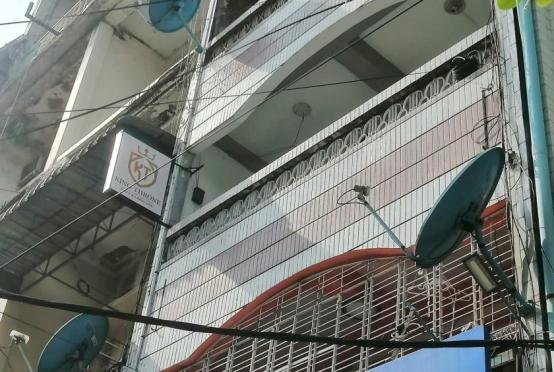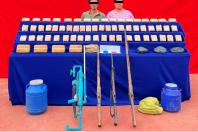by Shi Futian and Sun Ruisheng
BEIJING (China Daily/ANN) - Watching the action will never be the same as game-changing tech wows remote viewers.
As much as we’d recommend it, making the trip to Shanxi province is not necessary for those curious to check out China’s stars of the future at the ongoing Second National Youth Games.
Thanks to 5G technology, a smartphone is now all you need to immerse yourself in the action.
The Games are the first major sports championships in China to embrace 5G tech, which, as well as improving the viewer experience, is making the jobs of organisers easier.
5G users on smartphones, IPTV and other devices can enjoy 360-degree visibility of every competition. Viewers can also zoom in or out and choose a variety of camera angles.
To some extent, those who watched last Thursday’s opening ceremony on 5G-enabled screens enjoyed an even better experience than the on-site spectators, whose views were limited by their seat position.
The multi-scene live broadcast of the stunning augmented-reality special effects, which included a huge fire phoenix that lit up the Games’ cauldron, could only be watched through the 5G network.
The technology is also used in the athletes’ village, where a digital tour of Shanxi’s most famous attractions is available on IPTV in the competitors’ rooms.
“The Second National Youth Games has embraced 5G data transmission, using it during the torch relay, competitions and various other moments,” said Zhang Fuming, vice-governor of Shanxi province.
“The opening ceremony also embraced 5G broadcast technology. We aimed to provide great visual effects and an immersive experience for all the spectators. The opening ceremony was an unique experience and will be a great memory for all.”
According to Shanxi Daily, more than three million people watched the opening ceremony through the 5G live broadcast on their smartphones, with additional users watching on other devices such as IPTV.
Zhao Lumei was blown away by what she saw.
“I heard many of my friends talking about the new 5G technology that’s being used at the Youth Games, so I thought I must try it myself,” Zhao told chinanews.com.
“It’s like I had the magical power of bilocation. I could choose different camera positions and the new tech offers great visual effects. It was just like I was on site that night. Now I just wish the new 5G era could come quicker.”
Another amazed 5G newbie, Guo Yikun, said: “This is tech that I’ve absolutely never seen. It allows us to watch a game from all these different angles. Also I tried the 5G network and it is really fast. I hope this new tech can be accessed by the public soon. I can’t wait to see the future development of 5G technology.”
5G’s capability to handle huge amounts of data makes it an ideal companion for live broadcasts.
“During the opening ceremony, we offered four screens of high-definition live broadcasting for users to choose, which needed high data transmission requirements,” said Gu Shengxue, who works for the Games’ 5G live-broadcasting service provider.
“The 4G network is unable to transmit the mass data of this high-definition live broadcasting. Also, users can zoom in or out and change the angle of each live camera. It’s very different from watching traditional TV.
“For example, during a soccer match, with this technology you wouldn’t have to follow the broadcasting director. You can choose to watch from different cameras and get better angles to see how a player scored.”
Visitors to Shanxi Sports Centre, the Games’ main stadium, can get a better idea of how the technology works at a 5G interactive exhibition being staged next to the arena.
The exhibition also shows the application of 5G in different sectors such as remote-controlled driving, smart factories and medical assistance.
“5G can allow a mine truck to be remotely controlled with no driver in the vehicle,” said Dang Zhou, a guide at the exhibition.
“A mine truck might need four drivers a year to keep it operated every day. Each driver might earn 250,000 yuan ($35,000) a year. So the technology can save a lot on labour costs.
“Also, it’s hard to hire labour for some mines, given the risks of the job. With the 5G and unmanned driving tech, we can increase the speed of a mine truck from 15 km per hour to 30 with much lower risk.
“The tech can also be used in the medical sector.
“A doctor in Beijing can remotely assist another doctor in another province to check the condition of a patient or even conduct a small surgery through a remotely controlled machine using the data transmission capability of the 5G network.”















